Text
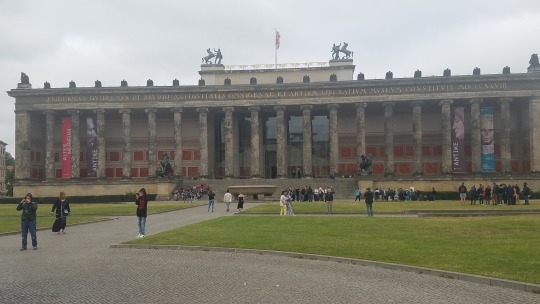
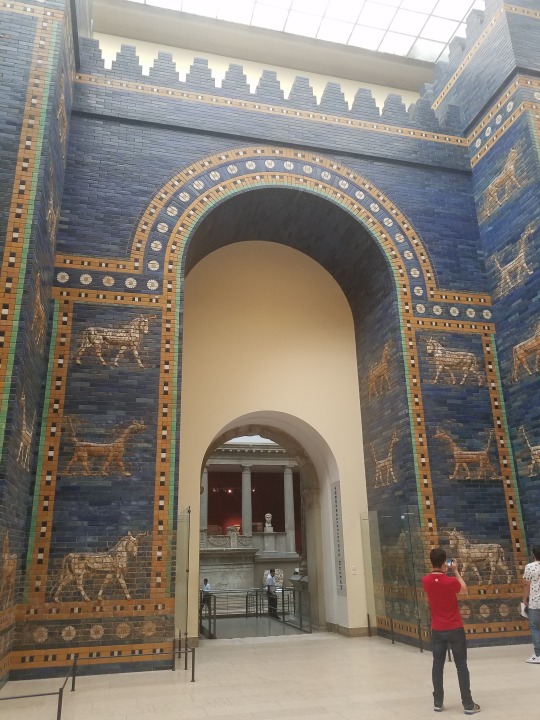

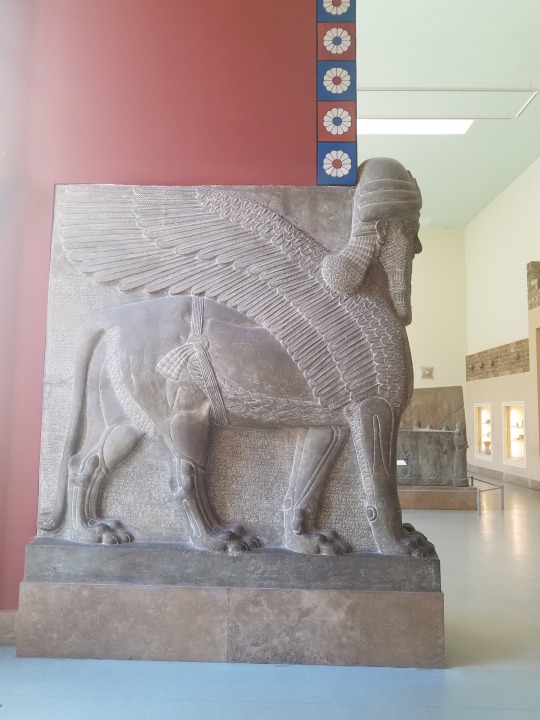

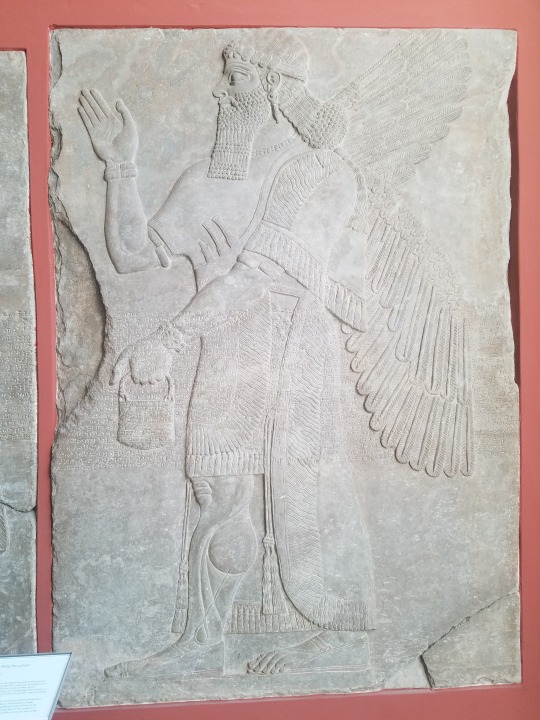
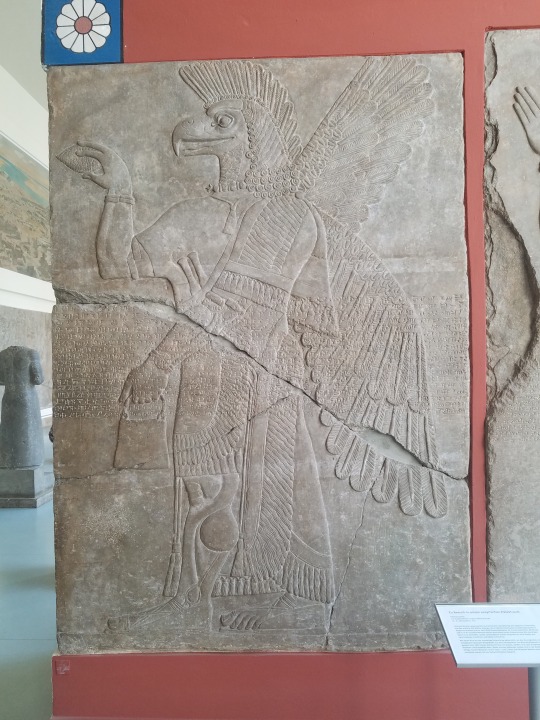
Berlin has 170 museums! We visited a few, but I especially want to point out the Altes Museum and the Pergamonmuseum. The first photo is of the outside of the Altes Museum, which is dedicated to Greek, Etruscan, and Roman art and culture. The other photos are of exhibits from the Pergamonmuseum, which specializes in Babylonian and Assyrian antiquities. You see the fabulous Gate of Ishtar from Babylon and the rest are treasures from the Assyrian palace in Niniveh.
0 notes
Text
The word for "milk" in German is "milch", and organic milk is "bio milch". You may also know that I love milk! (Maybe I'm overweight because I like so many foods like milk, gelato, sushi, cheeses, butter, blood sausages, etc.!) German bio milch blew me away!!!! And it was much cheaper than in the U.S. Thankfully, Steven also likes milk as much as I do; so we were on a constant search for and tasting of the fabulous, magnificent, German bio milch with 3.5% fat content. I'm pretty sure that I drank more bio milch during this trip than Reisling wine and German beers! (Maybe a tie with the beers.) So, if you go to Germany, indulge in their bio milch 3.5% fat!
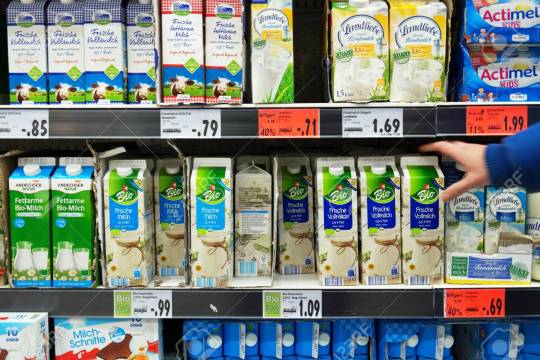
0 notes
Text
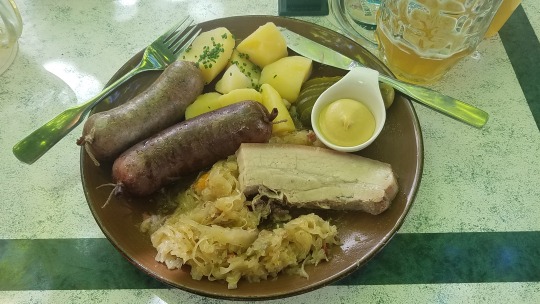
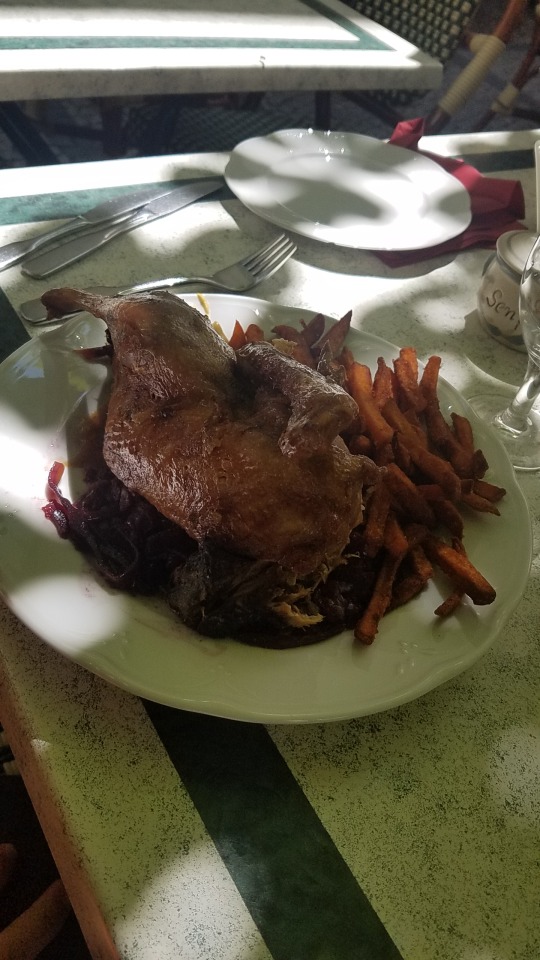
Those of you who know me well, know that I have a passion for blood sausages. If I've mentored you, you've probably tried an Argentine morcilla (blood sausage in Spanish) at Graziano's Parrilla Argentina in Miami. Of course, the moment I saw a Blutwurst (blood sausage in German) on a menu of an old style German restaurant that was highly rated, I ordered it. It's the dark sausage in the middle of the left photo. Wunderbar! There were so many spectacular meals during this trip to Germany: roasted ham hock, German-style roasted suckling pig, schnitzels, sausages galore, amazing liver dishes, cheeses I had never tried before! An unexpected surprise is that we visited during the season for chanterelle mushrooms; so we had numerous dishes, especially savory soups, with the chanterelles. The second photo above was of a tasty fried half of duck ordered by the boys.
0 notes
Text
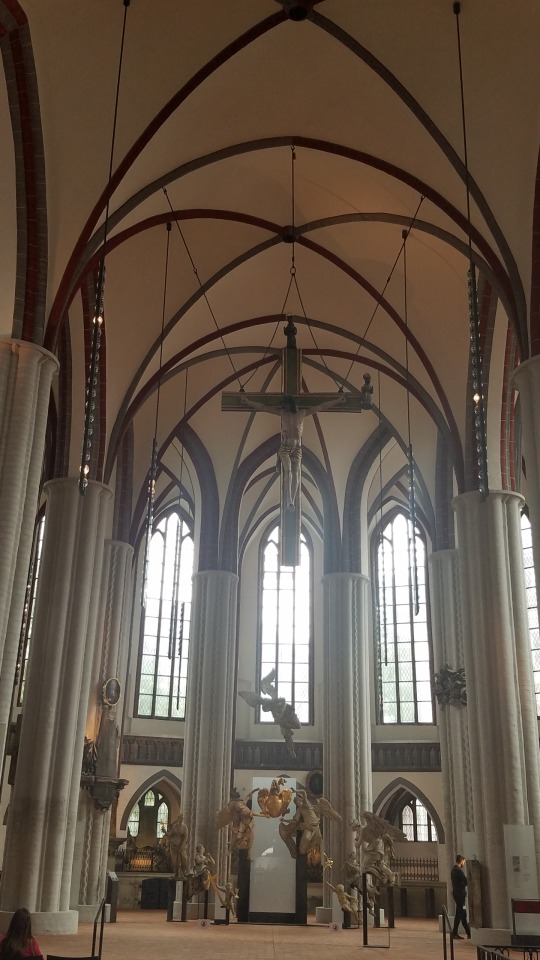

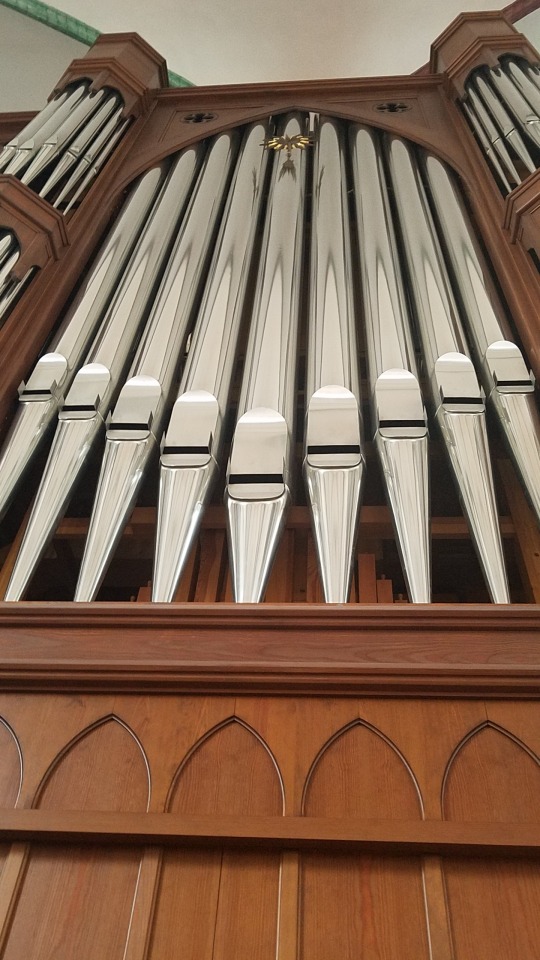
The inside of St. Nikolai Kirche transports you back in time to the 13th century. It's the oldest church in Berlin. The church is located in the eastern part of central Berlin. The church was built between 1220 and 1230. Because of its historical significance, it's now a museum.
0 notes
Text
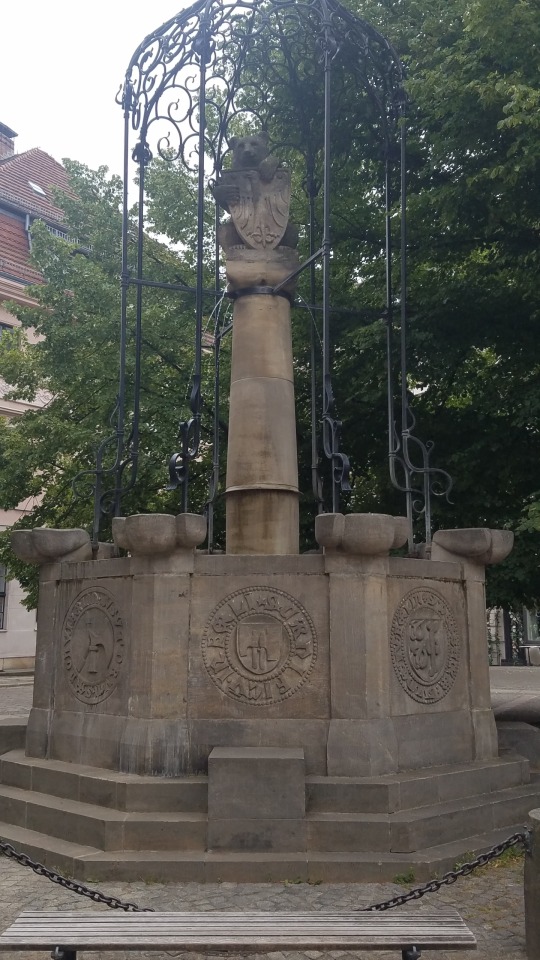
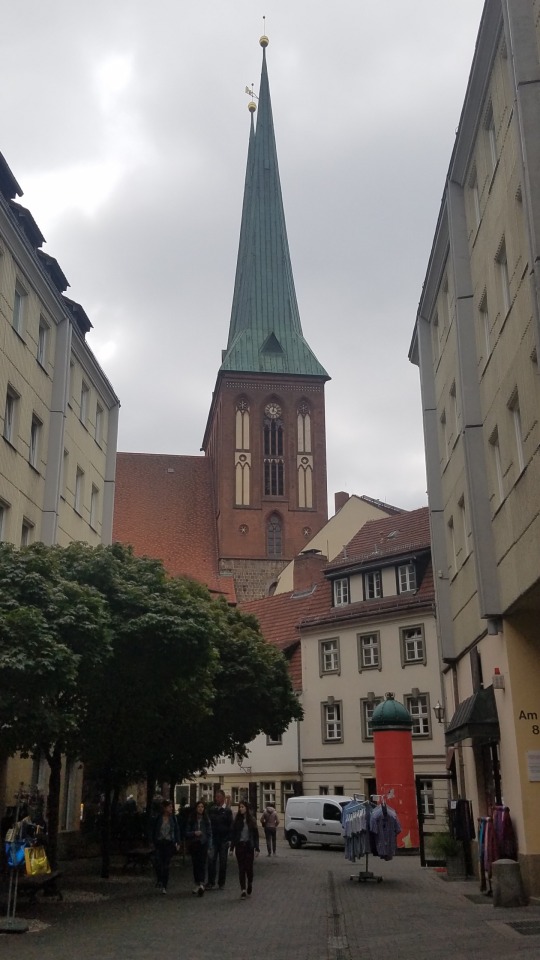
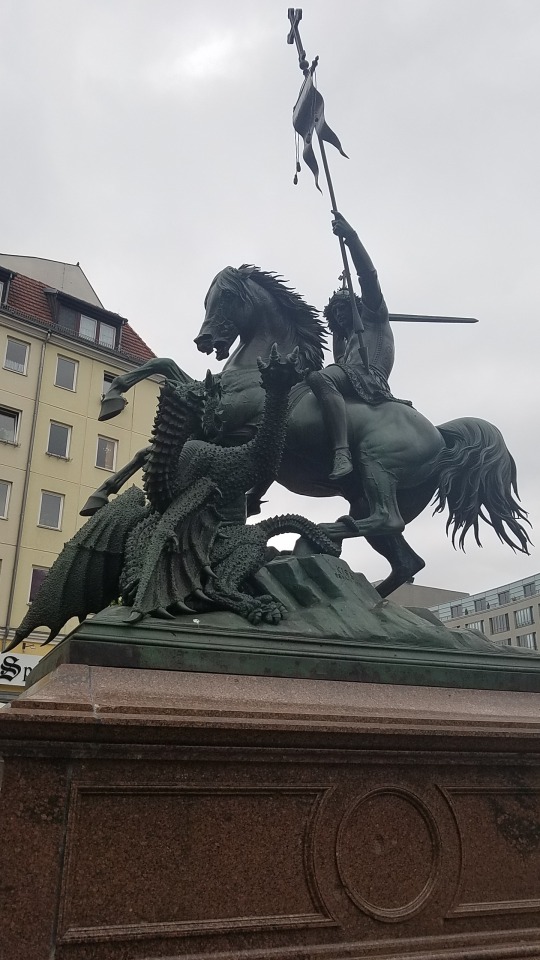

Berlin was founded in 1157 by Alfred the Bear, Margraviate of Brandenburg, at the intersection of two important trade routes right at the point of the first photo. That's why you'll find bear figures all throughout Berlin. The church with the two spires is St. Nikolai Kirche (St. Nicholas Church), the oldest church in Berlin.
0 notes
Text
As we were walking through parts of what used to be East Berlin, we came across this statue of Karl Marx and Friedrich Engels, the founders of socialism and its progeny, communism. With all the talk about Democratic Socialism, I hope I never see a sculpture of Marx and Engels in the U.S.! But how foolish is man in failing to learn and cyclically repeating the errors of the past!
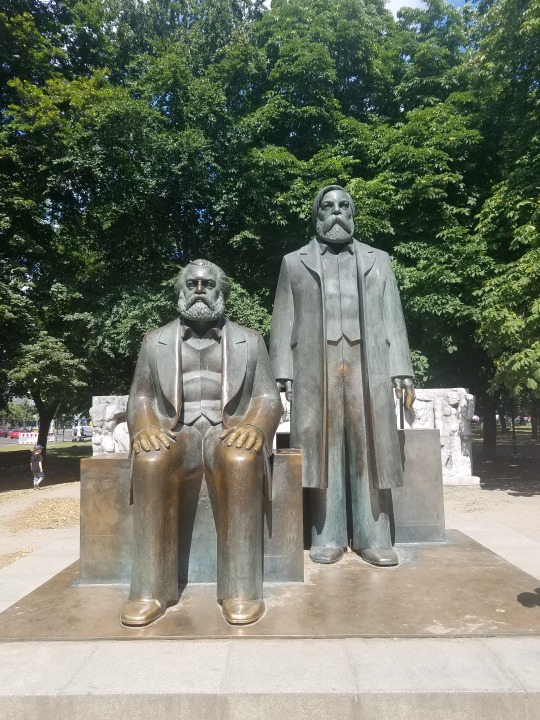
0 notes
Text
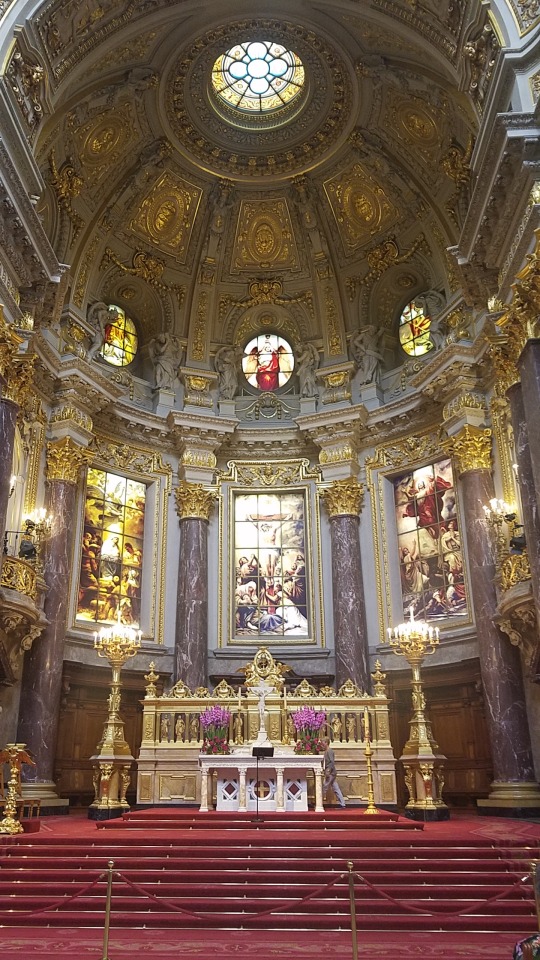

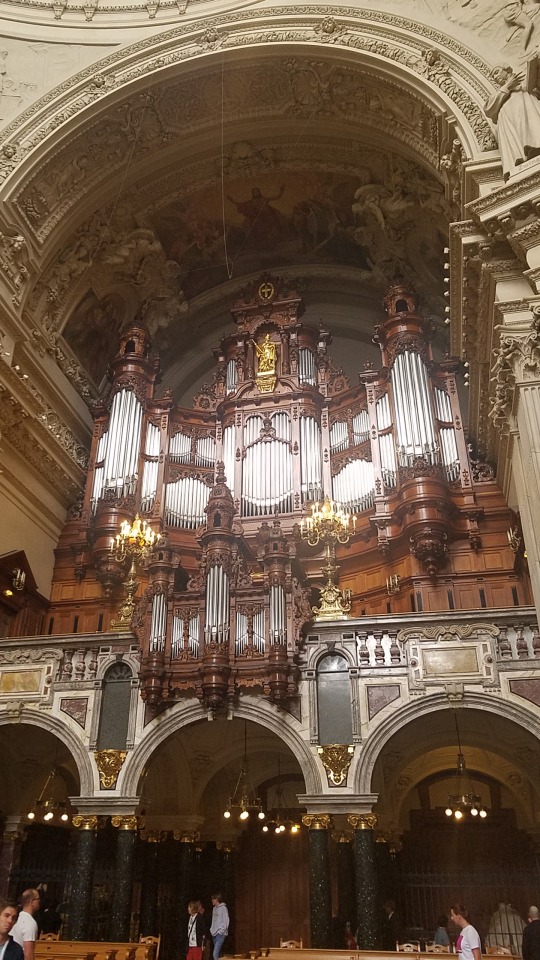
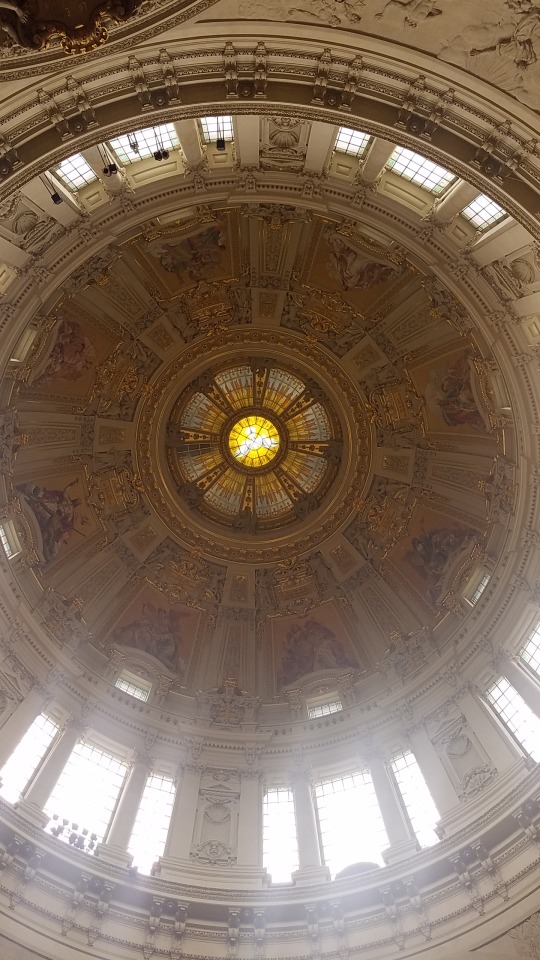
When I walked into the Berlin Cathedral, for a moment I thought I had walked into a Roman Catholic Cathedral. In fact, the Berlin Cathedral is Protestant, with sandstone sculptures of Martin Luther, Huldrych Zwingli, and John Calvin. During the audio guide, I learned that they had hired a Roman Catholic to design it. No wonder! It's as impressive inside as it is outside!
0 notes
Text
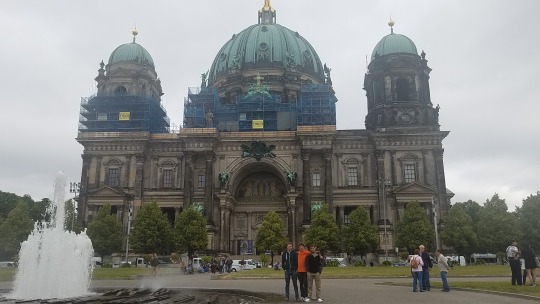
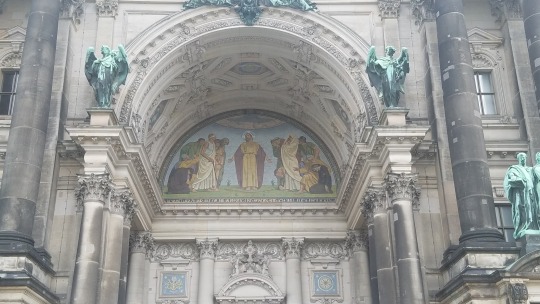



The Berlin Cathedral (Berliner Dom). It is located on Museum Island. The current building was finished in 1905, but a bomb blast in 1940 shattered much of the stained glass work, and a direct hit by an incendiary bomb in 1944 collapsed the splendid dome onto the the main floor and into the burial vault. But, thankfully, it has been meticulously rebuilt to imitate the original architecture and art. It is one of the most splendid buildings I've ever seen!
0 notes
Text
A very enjoyable cruise on the Spree River through the heart of Berlin. Top photo is of the Reichstag and the Reichstag Dome (the Reichstag is the German Parliament). Bottom photo is of the Berliner Dom (the Berlin Cathedral).
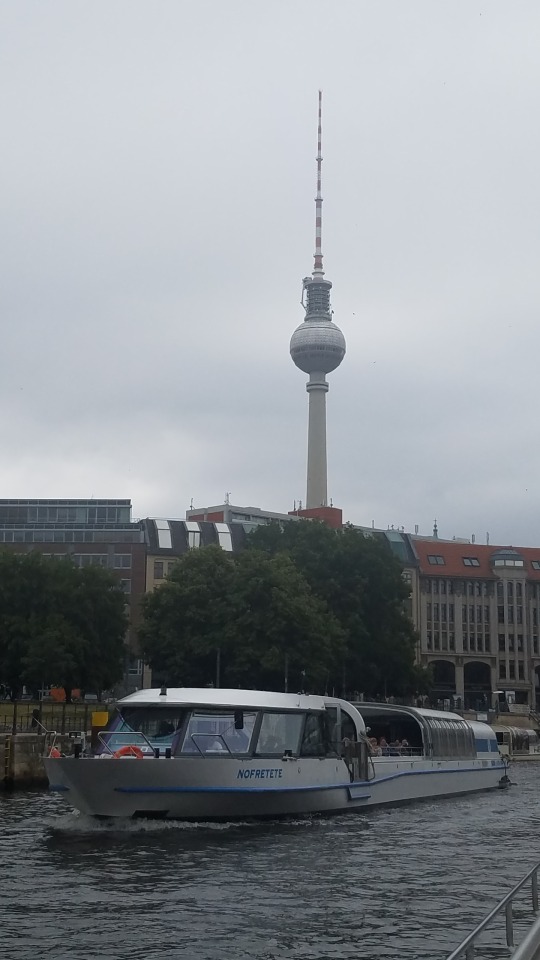


0 notes
Text
Punks in First Class, supposedly signing "305", one of the two Miami area codes.

0 notes
Text

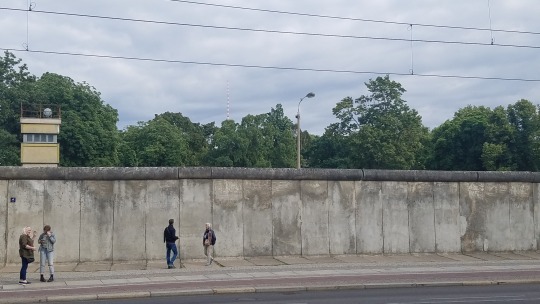


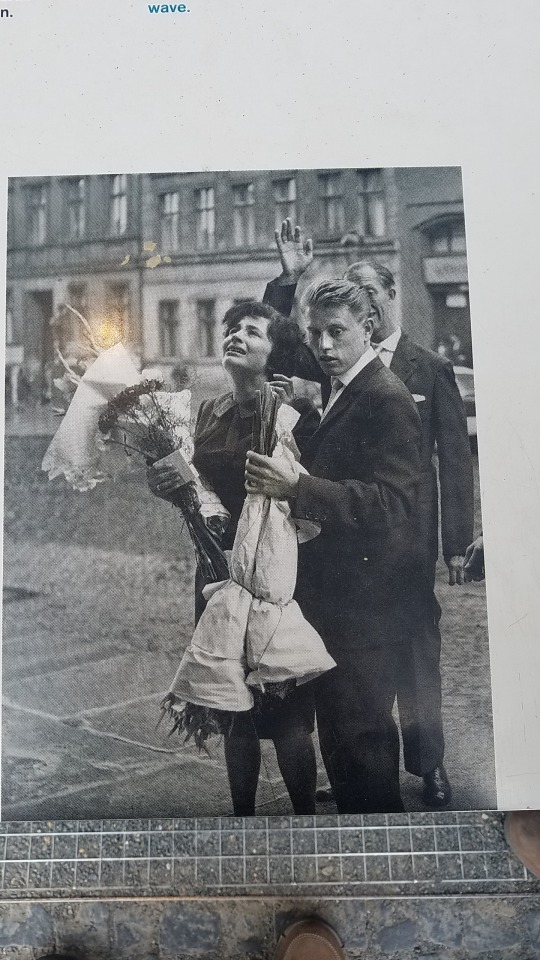
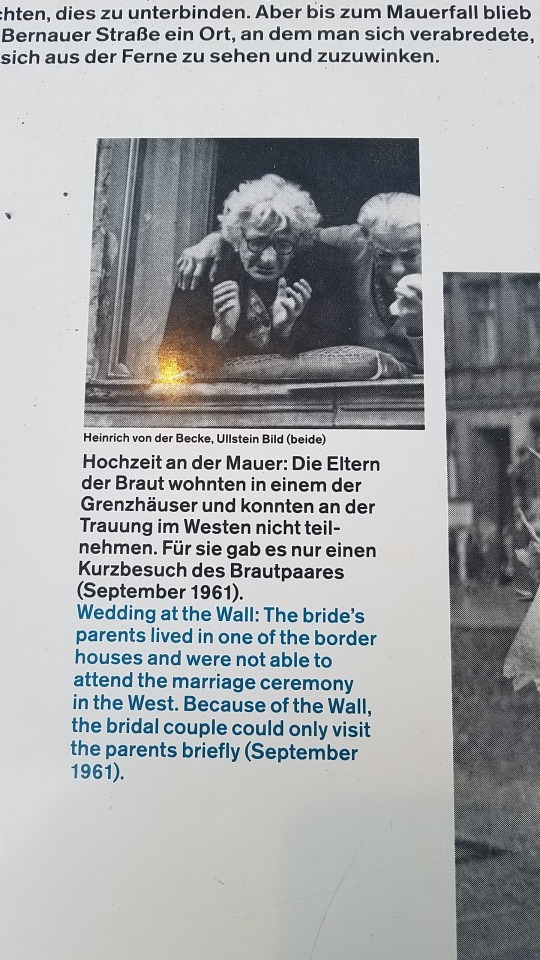
The Berlin Wall. We went to Ackerstaße, which was ground zero when the German Democratic Republic (aka East Germany, a totalitarian satellite state of the Soviet Union) decided to build an armed wall around East Berlin, which they controlled, to stop East Berliners from emigrating/escaping into West Berlin, part of the Federal Republic of Germany (aka West Germany, which was allied with the U.S., Great Britain, and France). The GDR began to build the Wall in 1961, separating family, friends, and parishioners into West or East Berlin. It was very emotional for me to see how a totalitarian/communist government would wall its people to keep them in and terrorize them through their secret police. Sadly, just as George Orwell predicted in his dystopian novel, Nineteen Eighty-Four, which he wrote in 1948, a surprisingly large number of East Berliners spied and tattletaled on their neighbors assisting the secret police.
0 notes
Text



The Siegessäule. The Victory Column, with Victoria, the Goddess of Victory, in the centre of the Tiergarten, is one of Berlin's most famous landmarks. We climbed all 270 steps to get to the top and take photos of Berlin.
0 notes
Text
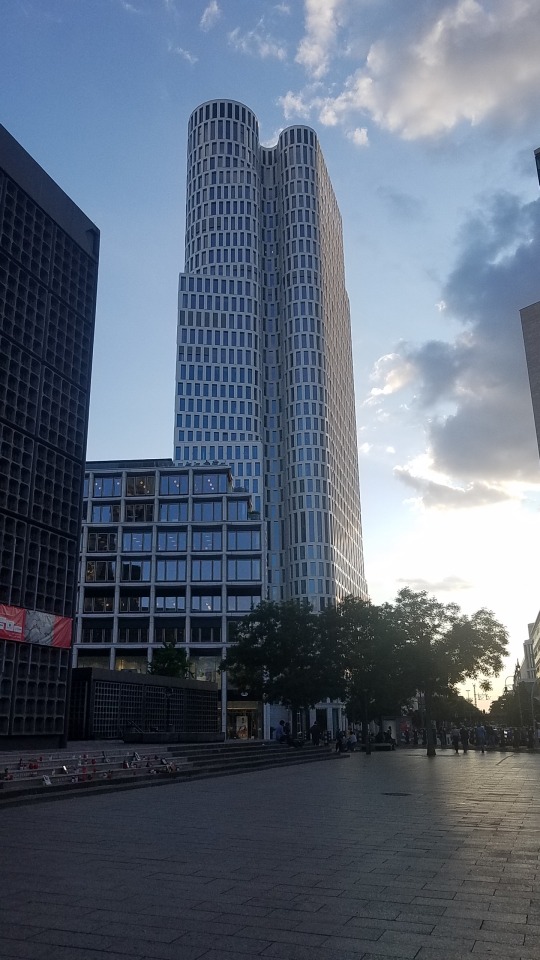
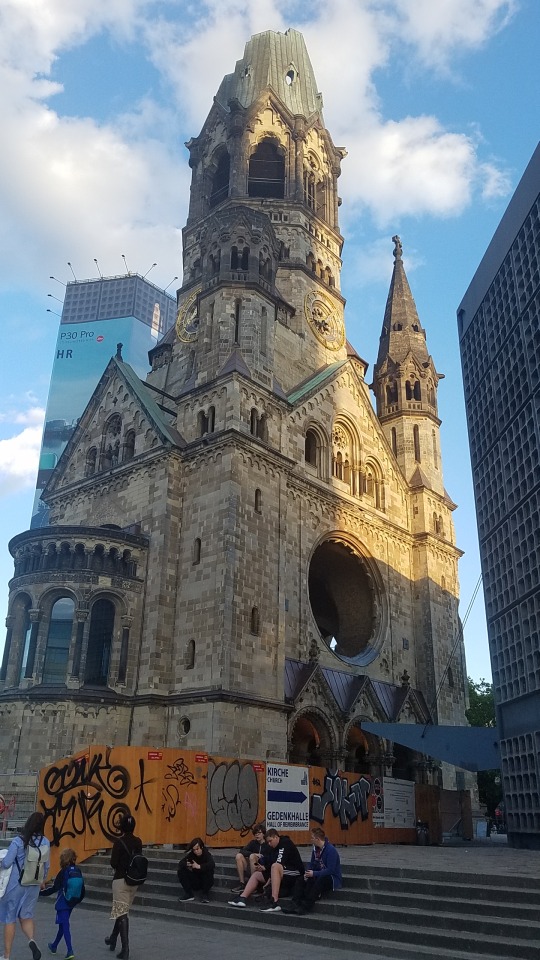
Our hotel in Berlin is the wavy building. Our view from the 14th floor is of this church destroyed during WWII.
0 notes
Text
This is what travelling with two teenaged punks for two weeks does to you. Hopefully, I can recover!


0 notes
Text

Berlin's most elegant hotel, the Hotel Adlon Kempinski Berlin was destroyed in WWII and is a reconstruction of the original. It's a beautiful property, and we had a fabulous lunch there, serving some of the best cuisine I've ever tasted. Throughout this trip, apart from tasting the delicious German beers, we've been on a quest to experience German Rieslings from the Rhine area. The 2014 Dr. von Bassermann-Jordan Kirchenstück has by far been the best. You will note the "GG" on the label. It stands for Grosses Gewächs. This term is used to identify the finest white wines in Germany and is particular to dry (trocken) wines.
The designation is not an official part of German wine law, but was conceived by a group of top producers in the early 2000s and refined as recently as 2012 as part of a plan to identify the best vineyard sites.
More than half of ‘GG’ vineyards are planted to Riesling, according to the Court of Master Sommeliers.
All Grosses Gewächs comes from a Grosses Lage (‘great site’), the best vineyards according to the German VDP classification system that is overseen by a group of producers called the Verband Deutscher Prädikatsweingüter (VDP).
Like the grand crus of Burgundy, these wines take the name of the vineyard and not the village. But, the VDP is an invitation-only, industry body numbering around 200 producers and, as stated above, its rules are therefore not officially part of German wine law.
To make the GG grade, yields must not exceed 50 hectolitres per hectare, and the grapes must be physiologically, fully ripe and also hand harvested.

0 notes


